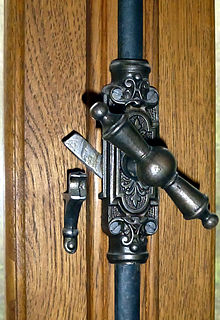Quarter-Turn

A Quarter-Turn is a type of lock. It usually consists of an actuating mandrel, a housing, a nut , the locking tongue and a screw for assembling these individual parts. Rotary latch are mainly used in the industry for use, for example in industrial housings or cabinets , to be where sensitive technology against the environment or unauthorized access protected. In the simplest case, locking by means of a rotary bolt merely prevents a door or flap from opening by itself.
The locking tongue can be designed differently depending on the application. These include, for example, stepped tongues that press the door against the frame when it is closed, or hook tongues that not only grip behind the frame, but also include a locking bolt.
A seal and a grounding spring can be added to a standard Quarter-Turn. That depends on the purpose. If, for example, protection against splash water or dust is necessary in a housing, the rotary lock must also guarantee this protection.
Screw bolt
In contrast to the rotary bolt, a screw bolt is locked with a combined pushing and turning movement similar to a screwing movement. To ensure easy opening and closing, a rotary movement of a maximum of 90 degrees is usually sufficient.
The lock consists of a locking bolt that engages in a receiving component (a spring clip) via a locking curve (defines the screwing behavior).
Basically two variants are available:
- Manual screwing in by pushing and turning
- Automatic screwing in by pressing, the screw bolt turns by itself through the locking curve.
The combination of pushing and turning makes it possible to preload seals.